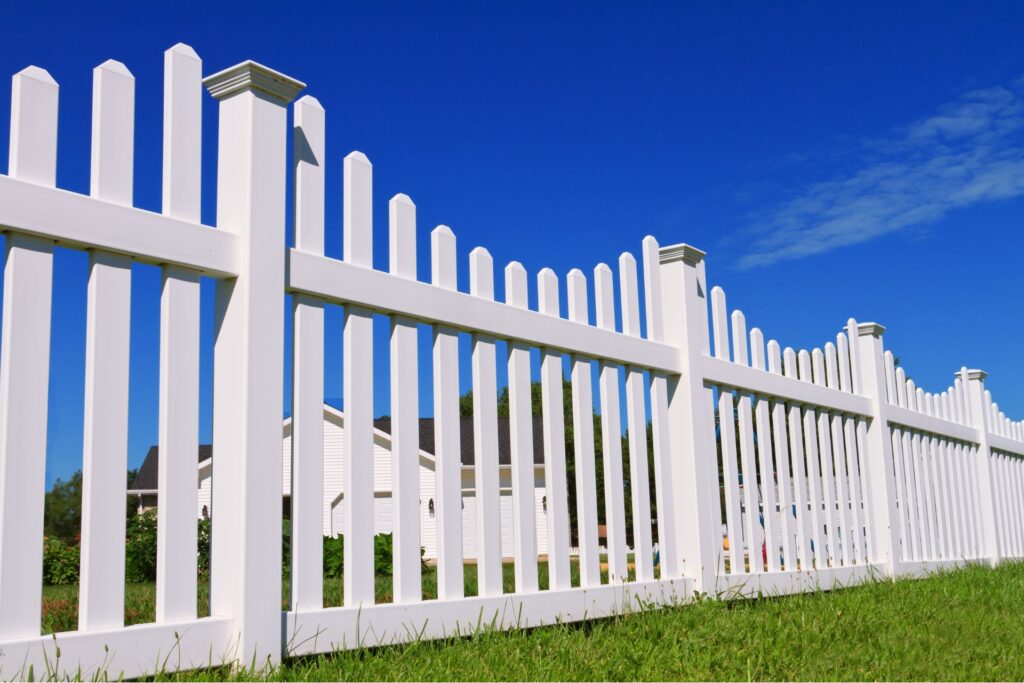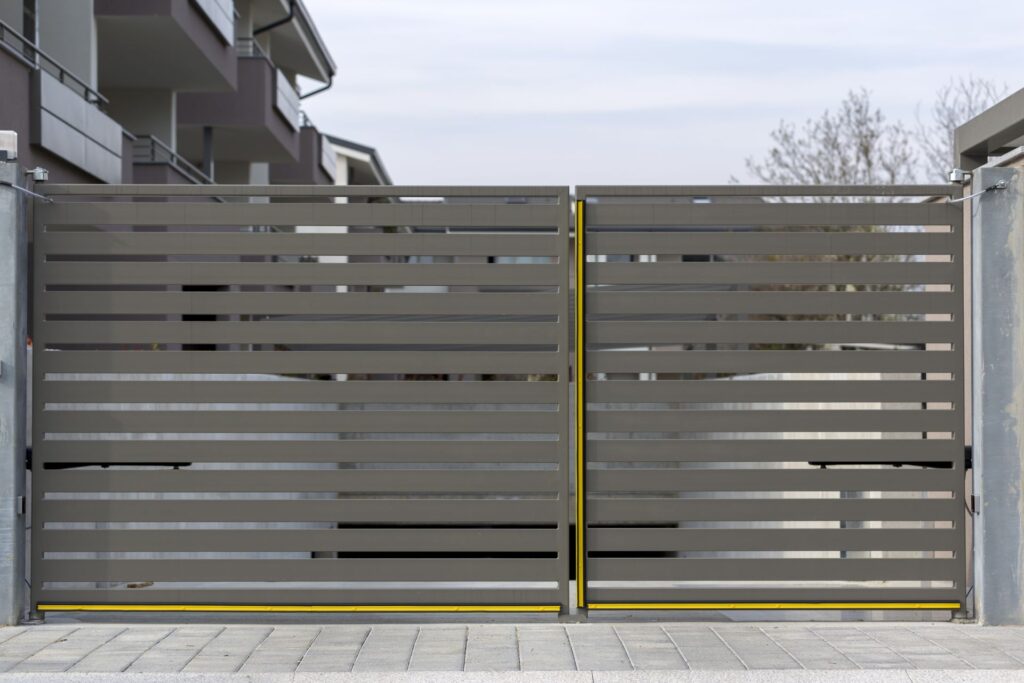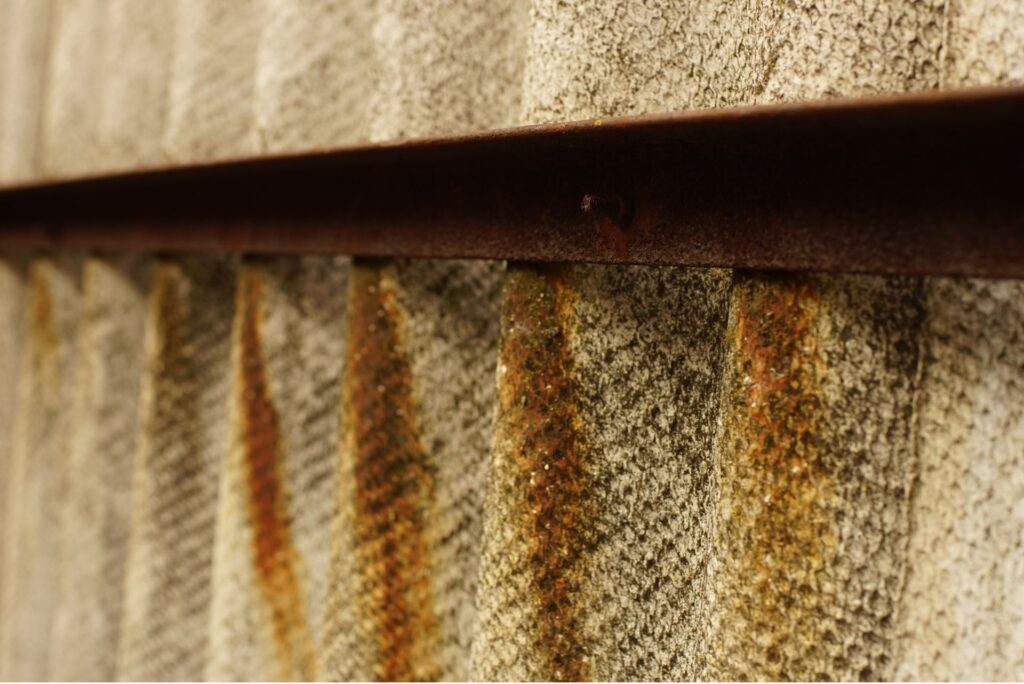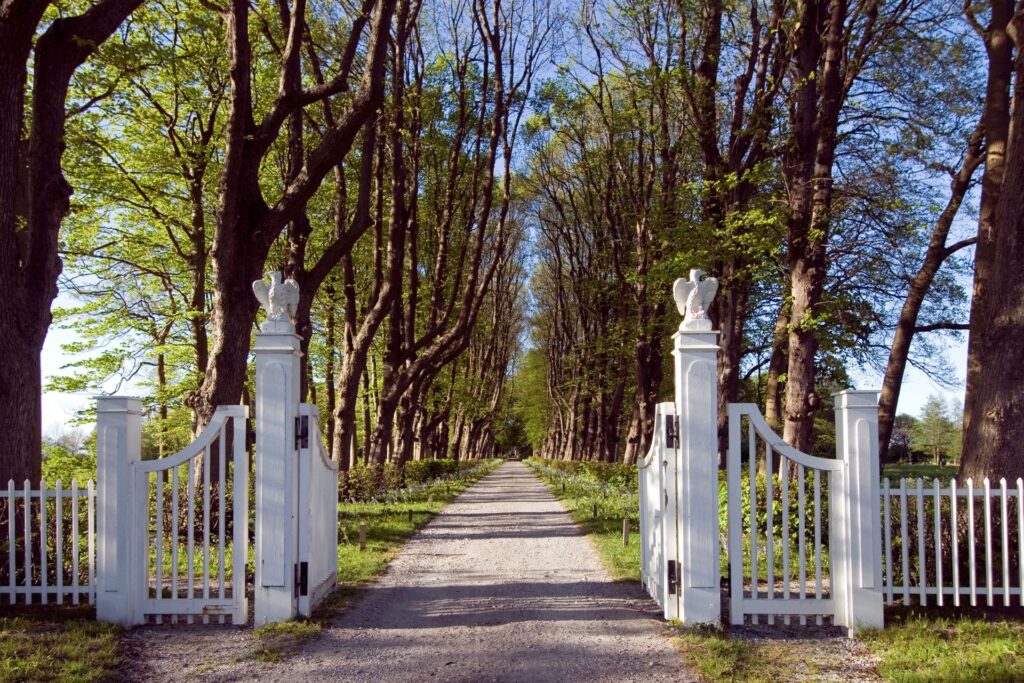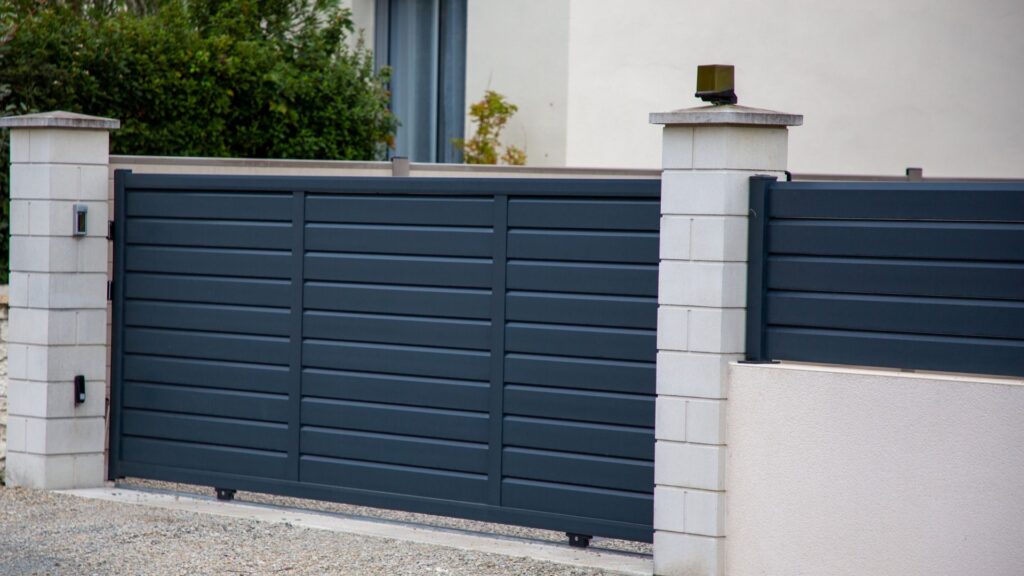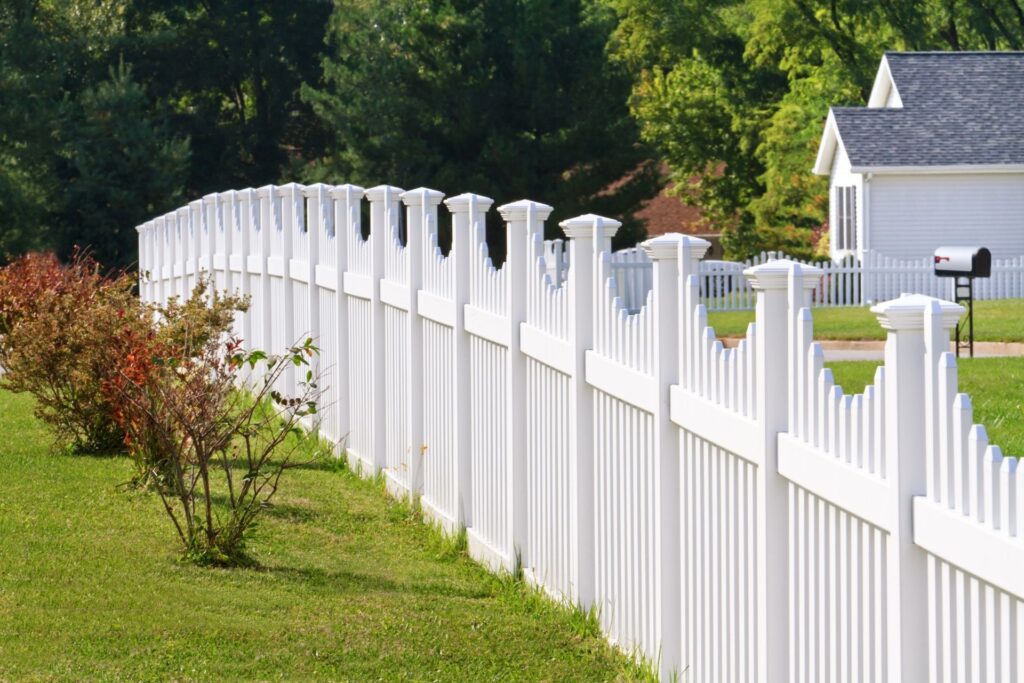Welcome to our comprehensive guide on understanding fencing costs per meter in New Zealand, where fencing not only safeguards your privacy but also enhances the security and aesthetic appeal of your property. Whether nestled in a bustling urban center or enjoying the tranquility of the countryside, the right fence can define your home’s character. Navigating the myriad of fencing options and pricing can seem daunting, with material choices, labor costs, property characteristics, and personal preferences all influencing the final cost.
This guide aims to illuminate these factors, offering clarity and direction as you embark on your fencing project. By exploring different fencing materials, understanding cost influences, and comparing average expenses for various types, we aim to arm you with the knowledge needed to make informed decisions. From setting a realistic budget to choosing materials that balance cost with quality, we’re here to help you navigate the complexities of fencing costs in New Zealand, ensuring a successful and cost-effective project.
On average, wooden fences cost between $75 to $120 per meter, vinyl fencing ranges from $100 to $200 per meter, aluminum fencing falls between $150 to $250 per meter, and chain-link fences are approximately $50 to $100 per meter. Factors such as labor costs, location, additional features, and legal considerations also play significant roles in determining the overall cost. Investing in quality fencing can not only enhance the aesthetic appeal and security of your property but can also add to its value over time.
Table of Contents
Overview Of Fencing Options In New Zealand
When it comes to selecting the right fencing for your property in New Zealand, the options are as varied as the beautiful landscapes of this country. From the traditional charm of wooden fences to the modern appeal of vinyl and aluminum options, not to mention the functional practicality of chain-link fences, there’s a solution for every need and aesthetic. Let’s dive into the most common types of fencing found in New Zealand, discussing their advantages and disadvantages to help you make an informed decision.
Wooden Fences
Wooden fences are a quintessential part of the New Zealand landscape, offering a classic and natural look that complements both rural and urban settings. The appeal of wood lies in its versatility and warmth, capable of being crafted into various styles to suit any property. However, while wooden fences add a timeless beauty, they require regular maintenance, including staining or painting and repairs due to weather-related wear and tear. Their durability can vary with the type of wood used, with some species more resistant to rot and insects than others.
Vinyl Fencing
Vinyl fencing has gained popularity in New Zealand for its durability and low maintenance. Unlike wood, vinyl fences are not prone to rot, rust, or insect damage, making them a practical choice for homeowners looking for longevity without the hassle of frequent upkeep. Vinyl fencing comes in a range of colors and styles, offering a clean and modern appearance. The initial cost might be higher than some other options, but its longevity and minimal maintenance requirements can make it a cost-effective choice over time.
Aluminum Fencing
Aluminum fencing is another low-maintenance option that suits the varied New Zealand climate, from coastal areas to the frosty regions. It’s resistant to corrosion, making it ideal for properties near the sea. Aluminum fences offer a sleek, contemporary look and can be powder-coated for added durability and color variation. While they provide security and are durable, they may not offer the same level of privacy as wood or vinyl fencing, unless designed with privacy panels.
Chain-Link Fences
For those prioritizing functionality and budget, chain-link fences are a practical option. Commonly used for securing commercial properties, schools, and sports fields, they’re durable and provide excellent security. However, they’re not typically the first choice for residential properties seeking privacy or aesthetic appeal. Chain-link fences are highly durable, resistant to harsh weather, and require minimal maintenance, making them a cost-effective solution for large areas.
Choosing the right fencing for your New Zealand property involves balancing aesthetics, maintenance, durability, and budget. Wooden fences offer timeless beauty but require regular upkeep. Vinyl fencing provides a modern look and minimal maintenance. Aluminium fencing is durable and suits various environments, though it may not offer full privacy. Chain-link fences are practical and budget-friendly but lack aesthetic appeal for residential use. Consider your priorities and property needs to select the fencing that best complements your home and lifestyle.

Factors Influencing Fencing Costs
When considering installing a fence around your property, it’s essential to understand the various factors that can influence the total cost. Whether you’re based in New Zealand or elsewhere, these components play a crucial role in determining your budget and the choices you’ll make throughout the process. In this detailed guide, we’ll break down the key elements affecting fencing costs, including material and labor costs, the influence of property size and layout, the impact of location and accessibility, and how additional features can alter your final bill. Let’s dive into each section for a comprehensive understanding.
Material Costs: The Foundation of Your Fencing Project
One of the primary factors affecting the cost of fencing is the materials used. The price can vary significantly depending on whether you opt for wood, vinyl, aluminum, or steel. Each material offers different benefits in terms of durability, maintenance, and aesthetic appeal. For instance, while wood fences are traditionally popular for their classic look and affordability, they require more maintenance over time. On the other hand, materials like vinyl and aluminum, though more costly upfront, offer longer lifespans and minimal maintenance. Understanding the pros and cons of each material and comparing their costs is essential in making an informed decision that aligns with your budget and preferences.
Labor Costs: More Than Just Man-Hours
The cost of labor is another significant factor that can affect the overall expense of fencing. Labor costs can vary based on several factors, including the complexity of the installation, the terrain of your property, and the going rates in your region. For example, a straightforward fence installation on flat ground will generally be less expensive than one requiring adjustments for slopes or obstacles. Additionally, the experience and expertise of the fencing contractor can also influence labor costs. Choosing the right contractor who offers a balance between cost and quality workmanship is crucial for a successful fencing project.
Property Size and Layout: Scaling Your Fencing Needs
The size and layout of your property directly impact the amount of material needed and the complexity of the installation, thereby affecting the cost. Larger properties will require more materials and potentially more complex installations, especially if the land has unique features such as hills or uneven terrain. The layout of your property, including the presence of any existing structures, trees, or landscape features, can also influence installation challenges and costs.
Location and Accessibility: The Geographical Influence
Your location can significantly affect fencing costs, especially in New Zealand, where prices can vary from one region to another. Factors such as the availability of materials, the cost of living, and even local regulations can impact the overall cost. Additionally, the accessibility of your property plays a role. Properties that are difficult to access or require special equipment for installation can lead to higher labor and transportation costs.
Additional Features: Customizing Your Fence
Adding extra features to your fence, such as gates, decorative finishes, or custom designs, will also influence the total cost. While these elements can enhance the functionality and aesthetic appeal of your fence, they require additional materials and labour, increasing the overall expense. Carefully considering which features are necessary and which ones you can do without can help manage costs without compromising on your fencing project’s quality or appearance.
By understanding these critical factors influencing fencing costs, you can make informed decisions that balance your desires with your budget. Whether you’re fencing a small residential lot or a large commercial property, taking the time to research and plan can lead to a successful and cost-effective fencing project.

Average Fencing Costs Per Meter In New Zealand
When considering fencing options for your property in New Zealand, understanding the cost implications is crucial. Fencing serves not just as a boundary marker but also enhances security, privacy, and the aesthetic appeal of your space. The type of fence you choose significantly influences the overall cost. In this section, we will break down the average fencing costs per meter for various fence types, ensuring you have all the information needed to make an informed decision.
Types of Fences and Their Costs
The cost of fencing can vary widely based on materials, design, and installation complexity. Here’s a look at the average costs per meter for popular fencing options, derived from market research and industry standards:
Wooden Fences
Pine: The most cost-effective option, ideal for those seeking a classic look without a hefty price tag. Average cost: $75 – $120 per meter.
Cedar: Known for its durability and resistance to rot, cedar is a mid-range option. Average cost: $100 – $160 per meter.
Vinyl Fences
Offering durability and minimal maintenance, vinyl fencing is a great long-term investment. Average cost: $70 – $200 per meter, depending on style and height.
Aluminum Fences
Aluminum fences are lightweight, rust-resistant, and offer a modern look. They’re perfect for decorative purposes or pool fencing. Average cost: $90 – $150 per meter.
Chain Link Fences
A practical and economical choice, especially for large areas needing enclosure without obstructing views. Average cost: $50 – $100 per meter.
Composite Fences
Composite fencing combines the best of wood and plastic, offering a high-end look with minimal maintenance. Average cost: $150 – $250 per meter.
Visual Comparison: A Closer Look at Costs
To aid in your decision-making, we’ve created an infographic that visually compares the average costs per meter of each fence type. [Note: As a text-based format, we suggest creating an actual infographic for your website for better engagement and understanding.]
Factors Influencing Fencing Costs
Several factors can affect the final cost of your fencing project, including:
Installation Complexity: Difficult terrain or custom designs can increase labor costs.
Fence Height: Taller fences require more materials, impacting the overall cost.
Additional Features: Gates, decorative elements, and enhanced security features can add to the cost.
Making Your Decision
When choosing the right fence for your property, consider not just the initial cost but also the long-term maintenance, durability, and how well it meets your needs for privacy, security, and aesthetics. It’s advisable to get quotes from multiple contractors to ensure you are getting the best value for your investment.
Investing in the right fence can add significant value and enjoyment to your property. By understanding the average costs associated with different fencing options in New Zealand, you’re well-equipped to make a choice that balances cost, aesthetics, and functionality. Remember, the cheapest option isn’t always the best in the long run, and investing a bit more upfront can save you money and hassle over time.

Budgeting For Your Fence
When it comes to enhancing the privacy, security, and aesthetic appeal of your property, installing a fence is a substantial but rewarding investment. However, embarking on a fencing project without a solid budgetary plan can lead to unnecessary expenses and headaches. In this article, we’ll delve into essential budgeting strategies, the significance of obtaining multiple quotes, and the array of financing or saving opportunities available to homeowners. Equip yourself with the knowledge to navigate the financial aspects of your fencing project with confidence.
Setting a Budget for Your Fencing Project
Assess Your Needs: Begin by clearly defining the purpose of your fence. Whether it’s for privacy, security, or aesthetic reasons, understanding your primary objective will help guide your budgeting decisions.
Research Material Costs: Fencing materials vary significantly in price, from affordable chain-link options to premium wood or composite materials. Research the costs associated with each material type, keeping in mind their durability and maintenance requirements.
Consider Installation Expenses: Labor costs can differ based on the complexity of the installation and the terrain of your property. DIY projects might save money upfront but weigh this against the potential for higher costs if corrections are needed.
Include Additional Costs: Don’t overlook expenses such as permits, tools (for DIY projects), and maintenance supplies. These can add up and should be accounted for in your initial budget.
The Importance of Getting Multiple Quotes
Comparative Shopping: Acquiring quotes from several contractors not only gives you a clearer picture of the potential costs but also provides insight into the timeline and approach of different professionals.
Quality vs. Cost: While it might be tempting to go with the lowest quote, consider the contractor’s reputation, the quality of materials used, and past project successes. Remember, a lower cost might not always equate to value in the long run.
Negotiation Leverage: Having multiple quotes can empower you to negotiate more effectively, potentially leading to cost savings or upgrades at a lower price.
Exploring Financing Options and Savings Tips
Financing Options: Many homeowners might not have the full budget available upfront. Look into financing options such as home equity loans, personal loans, or credit lines. Some contractors also offer financing plans, which could be a convenient option.
Government Incentives: Investigate any local government incentives for fencing projects, especially those that contribute to environmental sustainability or security enhancements.
Seasonal Discounts: Timing your project can lead to savings. Off-peak seasons for fencing installations might offer lower prices due to decreased demand.
DIY Where Possible: If you’re handy and have the time, tackling parts of the project yourself can reduce labor costs. However, balance this with the understanding that some aspects of fencing installation might require professional expertise.
Budgeting for your fence involves a careful balance between your desires and your financial constraints. By thoroughly assessing your needs, doing diligent research on material and labor costs, obtaining multiple quotes, and exploring various financing and saving options, you can make informed decisions that align with your budget and project goals. A well-planned fence not only enhances the value and security of your property but also brings satisfaction in knowing you’ve navigated the financial aspects adeptly.
Remember, every fencing project is unique, and what works best for one homeowner may not suit another. Tailor your budgeting strategy to fit your specific situation, and you’ll be well on your way to successfully completing your fencing project without breaking the bank.
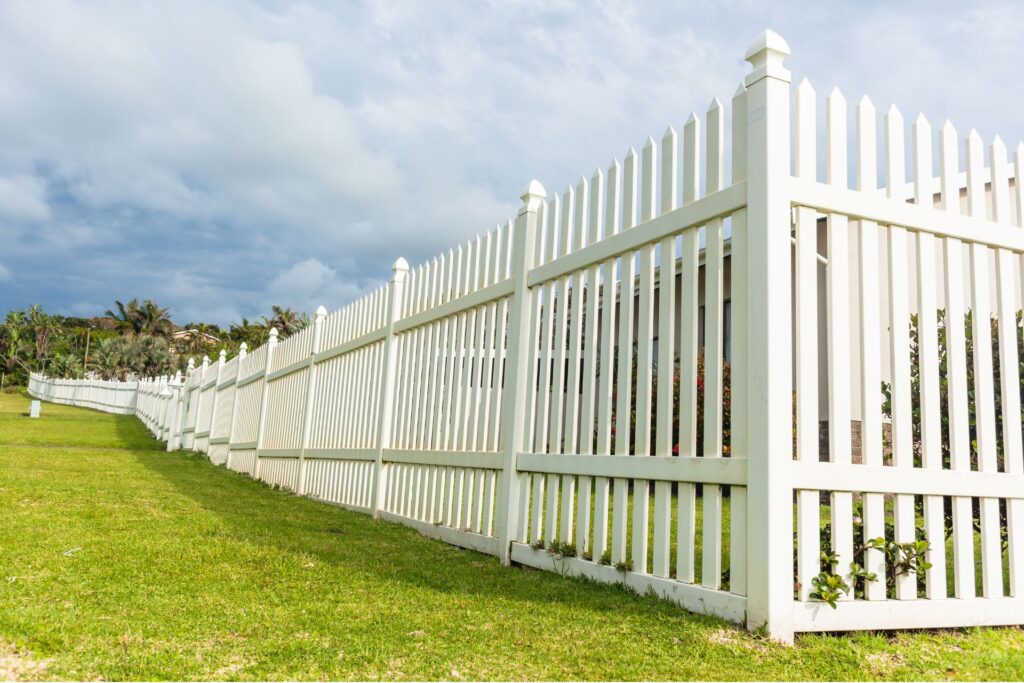
How To Reduce Fencing Costs Without Compromising Quality
When it comes to enhancing the security, privacy, and aesthetic appeal of your property, installing a fence is a significant step. However, the costs associated with fencing can quickly add up, making it essential to find ways to reduce expenses without skimping on quality. Below, we delve into practical strategies for minimizing fencing costs, ensuring you make informed decisions that align with both your budget and quality expectations.
DIY vs. Professional Installation: Pros and Cons
DIY Installation
Pros:
Cost Savings: One of the most compelling reasons to consider a DIY fence installation is the potential for significant cost savings. By eliminating labor costs, you can often reduce the overall expense by a substantial margin.
Flexibility: Taking on the project yourself allows for complete control over the timeline and execution, enabling you to work at your own pace and make adjustments as needed.
Cons:
Time and Effort: DIY projects require a considerable amount of time and physical effort, which might not be feasible for everyone.
Potential for Mistakes: Without professional experience, there’s a higher risk of mistakes, which can lead to additional costs or the need for future corrections.
Professional Installation
Pros:
Expertise and Efficiency: Professionals bring experience and skill to the table, ensuring the job is done efficiently and to a high standard.
Guarantees and Warranties: Many professional services come with guarantees and warranties, offering peace of mind and protection against potential issues.
Cons:
Higher Initial Cost: The primary drawback of professional installation is the higher upfront cost, mainly due to labor expenses.
Choosing Cost-Effective Materials That Still Meet Your Needs
Selecting the right materials is crucial in balancing cost and quality. Materials such as vinyl, while initially more expensive than wood, offer longevity and minimal maintenance, potentially saving money in the long run. Alternatively, treated wood can provide a cost-effective solution that doesn’t compromise durability. Researching and comparing material options based on price, durability, and maintenance requirements will help you make a cost-effective choice that aligns with your specific needs and preferences.
Maintenance Tips to Prolong Fence Life and Reduce Long-Term Costs
Regular maintenance is key to extending the life of your fence and avoiding costly repairs or replacements down the line:
Regular Inspections: Conduct periodic inspections to identify and address issues such as loose posts, rot, or rust early on.
Cleaning: Keep your fence clean from dirt, debris, and foliage, which can cause wear over time.
Protective Treatments: Apply protective stains, paints, or sealants as needed to guard against weathering, rot, and pest damage.
By embracing a proactive approach to maintenance, you can ensure your fence remains in top condition for years to come, thereby minimizing the need for expensive interventions.
Reducing fencing costs without compromising quality requires a thoughtful balance of DIY efforts, careful material selection, and diligent maintenance. By weighing the pros and cons of DIY versus professional installation, choosing materials that offer the best value for your needs, and adopting regular maintenance practices, you can achieve a durable and attractive fence that aligns with your budgetary constraints. Remember, investing time in research and planning upfront can lead to significant savings and satisfaction in the long run.

Legal Considerations And Permissions
When planning a fencing project in New Zealand, understanding the legal landscape is crucial to avoid unexpected delays, fines, or disputes. This guide delves into the essential legal considerations and permissions you need to be aware of to ensure your fencing project proceeds smoothly. Our aim is to provide a resource that is not only informative but also easily accessible, ensuring that your fencing project in New Zealand complies with all legal requirements.
Understanding Boundary Issues
One of the primary legal considerations when installing a fence in New Zealand involves boundary issues. It’s imperative to accurately determine the boundary lines between properties to ensure that your fence is built within your legal limits. Disputes over boundary lines can lead to costly legal battles and may require a surveyor’s expertise to resolve. The Land Information New Zealand (LINZ) offers resources to help property owners understand their boundary lines, but in complex cases, hiring a professional surveyor is advisable.
The Fencing Act of 1978
The Fencing Act of 1978 is a critical piece of legislation that anyone considering erecting a fence should be familiar with. This Act outlines the obligations of property owners concerning dividing fences, specifying how costs should be shared, and the process for resolving disputes. It emphasizes the importance of mutual agreement between neighbors regarding the fence’s specifications, costs, and maintenance responsibilities. Familiarizing yourself with the Fencing Act can prevent legal issues and ensure a harmonious relationship with your neighbors.
Local Council Regulations
Local council regulations in New Zealand can significantly impact fencing projects. Each council may have different rules regarding the height, materials, and placement of fences, especially in front yards or near roads where visibility can be an issue. Before commencing your fencing project, it’s essential to consult with your local council to obtain any necessary permits and ensure your fence complies with local bylaws. This step cannot be overlooked, as non-compliance can result in having to modify or remove your fence, incurring additional costs.
Resource Consent
For certain types of fences or in specific areas, you may need to obtain a resource consent from your local council. This is particularly relevant if your fence could impact the environment, historical sites, or public spaces. The consent process evaluates the potential effects of your fence on these factors and ensures that your project aligns with broader community and environmental goals. Obtaining resource consent can be time-consuming, so it’s advisable to start this process early.
Engaging with Neighbors
While not strictly a legal requirement, engaging with your neighbors early in the planning process is highly recommended. Open communication can prevent disputes and ensure that your fencing project is met with understanding and cooperation. In cases where neighbors share a boundary fence, their consent and contribution towards the costs might be required under the Fencing Act of 1978.
Navigating the legal considerations and permissions required for fencing in New Zealand can seem daunting at first. However, by understanding boundary issues, familiarizing yourself with the Fencing Act of 1978, adhering to local council regulations, obtaining necessary resource consents, and maintaining open communication with neighbors, you can ensure that your fencing project is both legally compliant and smoothly executed. Remember, investing time in research and consultation at the beginning of your project can save you from headaches and additional costs down the line.
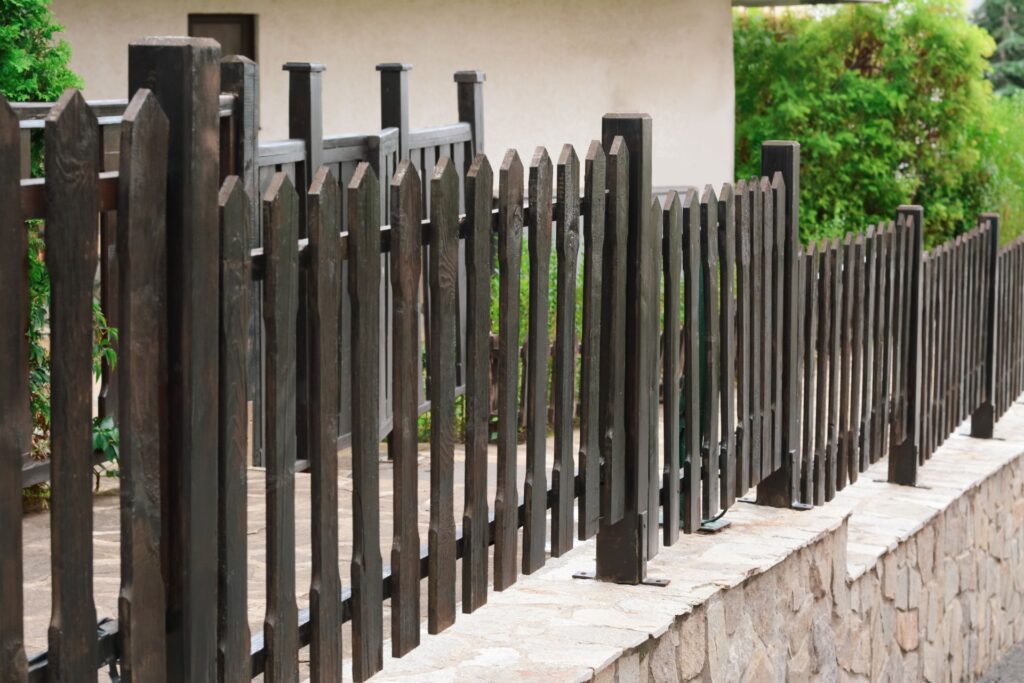
The Long-Term Value Of Investing In Quality Fencing
When it comes to home improvements, the focus often leans towards interiors or more visible projects like landscaping. However, an often overlooked but crucial aspect is the fencing that surrounds your property. Investing in high-quality fencing is not just about marking your territory; it’s a strategic move that enhances your property’s value and saves money over the long term. Let’s dive into how making the right choice in fencing can be a game-changer for homeowners.
Enhancing Property Value with Durable Fencing
First and foremost, quality fencing directly contributes to increasing your property’s market value. Durable, well-designed fences made from high-quality materials such as vinyl, wrought iron, or composite wood not only last longer but also maintain their appearance over the years. This durability means less frequent replacements or repairs, saving homeowners a significant amount of money and hassle in the long run. A sturdy and visually appealing fence can be a major selling point, signaling to potential buyers that the property is well-maintained and secure. This can translate to a higher resale value and a more attractive listing on the real estate market.
Aesthetic Value and Curb Appeal
Beyond functionality, the aesthetic value of a quality fence cannot be understated. A fence is one of the first things people notice when they see a property. The right fence design can complement your home’s architecture and landscape, enhancing its overall curb appeal. Whether you prefer the timeless elegance of wrought iron, the rustic charm of wood, or the sleek, modern look of vinyl, choosing a style that aligns with your home’s character can make a world of difference. A well-chosen fence frames your property, giving it a finished look that stands out in the neighborhood.
Moreover, fencing offers the opportunity to express personal style while adding a layer of privacy and security. It creates a safe haven for families, pets, and valuable outdoor spaces. The peace of mind that comes with knowing your property is well-protected adds immeasurable value, beyond what can be quantified.
In conclusion, the benefits of investing in quality fencing are manifold. Not only does it enhance the aesthetic appeal and security of your home, but it also contributes to the long-term value of your property. With the right choice in materials and design, a quality fence is an investment that pays dividends in durability, savings, and attractiveness. Whether you’re looking to sell in the near future or simply want to enjoy a more beautiful, secure home, considering the long-term value of quality fencing is a wise decision. Remember, when it comes to home improvements, what surrounds your property is just as important as what’s inside.

FAQs: AboutFencing Costs Per Meter In New Zealand
What are the most common types of fencing in New Zealand?
The most popular types of fencing in New Zealand include wooden fences, which offer natural beauty; vinyl fencing, known for its durability and low maintenance; aluminum fencing, preferred for its modern look and minimal upkeep; and chain-link fences, which are cost-effective and durable.
How do material costs affect the overall fencing costs?
Material costs significantly impact the overall cost of fencing. Options like wood may be cheaper upfront but require more maintenance, potentially increasing long-term costs. Materials like vinyl and aluminum, while more expensive initially, offer durability and lower maintenance costs, providing better value over time.
Why do labor costs vary for fencing installation?
Labor costs for fencing installation can vary due to the complexity of the project, the experience level of the contractors, and local labor rates. Complex designs, difficult terrain, and the need for specialized tools can all increase labor costs.
How does the size and layout of my property influence fencing costs?
The size and layout of your property can directly influence fencing costs. Larger areas require more materials and labor, increasing costs. Additionally, properties with uneven terrain or obstacles may require extra work, further impacting the price.
Can the location of my property affect fencing installation costs?
Yes, the location of your property can affect installation costs. Remote locations may incur higher transportation fees for materials and labor. Furthermore, regional differences in labor rates and material availability can also impact the overall cost.
What additional features can increase fencing costs?
Additional features such as custom gates, decorative elements, and specialized finishes can increase fencing costs. These features often require extra materials and skilled labor, contributing to higher overall expenses.
What is the average cost per meter for fencing in New Zealand?
The average cost per meter for fencing in New Zealand varies by material: wooden fences range from $75 to $120, vinyl fencing from $100 to $200, aluminum fencing from $150 to $250, and chain-link fences from $50 to $100. These prices are indicative and can vary based on specific project details.
How can I reduce my fencing costs without compromising on quality?
To reduce fencing costs, consider a DIY installation if you have the necessary skills, opt for cost-effective materials that still meet your needs, and perform regular maintenance to avoid future repairs. Choosing a simpler design can also help minimize costs.
Are there any legal considerations I should be aware of before installing a fence in New Zealand?
Before installing a fence, be aware of local regulations regarding boundary lines, height restrictions, and permits. It’s important to check with your local council or consult with a legal expert to ensure compliance and avoid disputes.
How does investing in quality fencing add value to my property?
Investing in quality fencing can enhance your property’s security, privacy, and aesthetic appeal, potentially increasing its overall value. Quality fencing is also more durable and requires less maintenance, saving money in the long run and making your property more attractive to future buyers.
Conclusion
Wrapping up our comprehensive discussion on fencing projects, it’s essential to underline the importance of material selection, adherence to local regulations, and the value of professional advice. Choosing the right material—be it wood for its timeless appeal, vinyl for durability, or composite for a modern touch—should align with your budget, maintenance preferences, and aesthetic desires. Equally crucial is understanding and complying with local zoning laws to prevent potential legal hurdles. Consulting with a fencing professional can offer deeper insights into the nuances of your project, from trending designs to installation best practices.
By carefully considering these factors, you position your fencing project for success, enhancing your property’s value and aesthetic while ensuring it meets both your needs and regulatory standards. This holistic approach to planning your fencing endeavor is key to making informed decisions that yield a durable, compliant, and visually pleasing outcome. Here’s to achieving a fencing project that stands the test of time, blending functionality with beauty, and making an informed choice that reflects your personal style and practical requirements.
